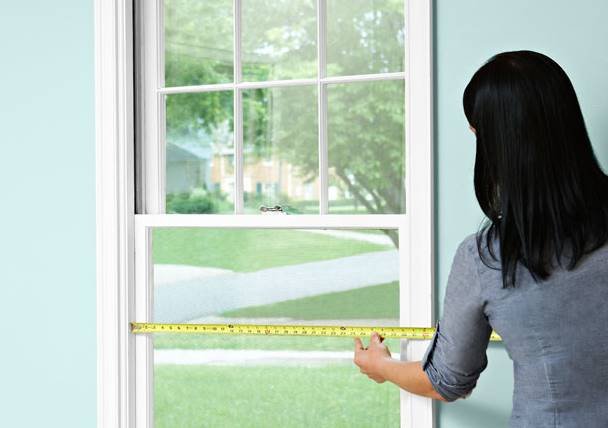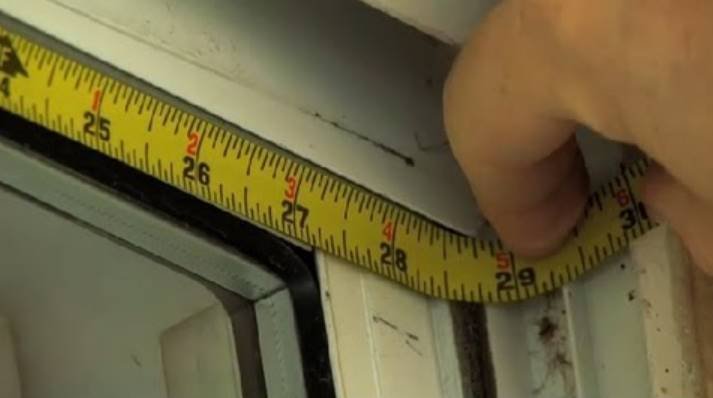Are you tired of pesky bugs and mosquitoes invading your home? A custom window screen might be just the thing you need to keep them out. But before you order one, it’s important to know how to measure your window accurately. In this blog, we will cover everything you need to know about measuring for a custom window screen.
From measuring inside edge to inside edge, to measuring the width and height of the window frame, we’ve got you covered. We will also dive into key terms such as u-channels vs l-channels and guide you on measuring for wood or non-wood (aluminum/vinyl) screens. By the end of this blog, you will have all the information needed to measure your windows like a pro and keep those pesky bugs out!
How to Measure Windows for Screens?
When measuring for custom window screens, it is essential to use a tape measure to get accurate dimensions. Measure both the height and width of your window frame without starting with ‘how to measure windows for screens.’ Measuring from the inside edge is suitable for an inside mount screen while measuring from outside is best for an outside mount screen.

Ensure accuracy by taking multiple measurements, subtracting 1/8 inch from both width and height measurements to account for necessary clearance when installing solar screens or fiberglass screens. If you need help with measurements, contact customer service via email or phone.
Inside Edge to Inside Edge Measuring
When it comes to getting accurate measurements for window screens, it’s important to follow a few simple steps. Start by using a measuring tape to measure the width and height of the window frame, taking multiple measurements to ensure accuracy.
Don’t forget to account for any obstructions or hardware that may affect the fit of your new screen. Once you have your measurements, double-check them before placing an order with customer service or attempting a DIY installation. By following these tips, you can make sure your custom window screens fit perfectly and look great.
Measuring the Width of the Window Frame Slider
Accurate measurements are crucial when ordering custom window screens. Check the inside width of your window frame at three points and subtract 1/8 inch from each measurement. Record the smallest measurement for a perfect fit.

Consider factors like vinyl or solar screens and window type before placing an order or contacting customer service for DIY installation instructions.
Measuring the Height of the Window Frame
To measure the height of a window frame for custom window screens accurately, start by placing your measuring tape from the top of the window sill to the top of the window frame. Measure in three locations on both sides and in the middle for maximum precision and accuracy.
Take note of the shortest measurement as this will be used as your final height measurement when ordering custom window screens. Before placing your order, double-check all measurements to avoid any issues with sizing or fitment. By following these easy steps, you can ensure that new screen fits perfectly without any issues.
Width and Measuring
When ordering custom window screens, accurately knowing the frame is crucial. Use a tape measure to record the distance from inside edge to inside edge of the frame and take multiple measurements to account for size variations.
To ensure a perfect fit, subtract 1/8 inch from both width and height measurements before ordering. Also, choose the right screen material based on your needs.

Sliding Window Screens
Accurately measuring for sliding window screens involves taking into consideration various factors. When measuring for width, it is important to use a tape measure and take multiple measurements from inside edges while accounting for variations in size.
For height measurement, take note of whether it is an inside or outside mount and measure from either top sash or bottom edge as per requirement.
Subtracting an eighth of inch from half windows will help obtain an accurate measurement for replacement windows. For custom window screens made with vinyl or fiberglass material, it is suggested to contact customer service via email before placing an order.
U-Channels vs L-Channels
For installing a custom window screen, both U-channels and L-channels are vital components. While U-channels are generally used for the sides of the screen frame, L-channels are employed for the top and bottom.
Choosing between these two depends on your window’s specific dimensions and requirements. Thusly it is crucial to measure precisely while selecting an appropriate channel to ensure that your new screen will be a proper fit.
Measuring for Wood Window Screens
To accurately measure for wood window screens subtract about one-eighth inch from both the height and width measurements of your existing screen’s dimensions. Be sure to measure the sill’s entire length from inside edge to inside edge for each measurement.
Take into account any differences in frame thickness at different points along the frame; subtract this added width from the final width measurement. For accurate measuring use a tape measure instead of a ruler.
Brick clips are another great option that can be used if you need mounting hardware for your screens. Customer service is always available to help with any questions you may have throughout the process.
Measuring for Non-Wood (Aluminum/Vinyl) Window Screens
Accurate measurement is essential when measuring for non-wooden window screens. Determine if U-channels or L-channels are needed based on whether the screen fits on the inside or outside of the frame.
You can measure the inside or outside dimensions of the frame with a tape measure. Double-check your measurements before ordering custom vinyl, solar, or fiberglass screens from customer service via email.
To measure accurately, subtract one-sixteenth of an inch from both your width and height measurements to allow for clearance and ensure a proper fit for the new screen in the existing window screen channel.
Conclusion
Measuring your windows correctly is key to ensuring a perfect fit for your custom window screens. Follow the steps outlined in this blog to ensure accurate measurements. Keep in mind that different types of windows require slightly different measuring techniques, so it’s essential to familiarize yourself with these before you begin. Additionally, you’ll need to decide whether you want U-channels or L-channels for your screen frame, depending on the type of window frame material. When measuring, make sure to take precise measurements using a tape measure and always double-check before ordering your custom window screens. For more information on how to measure for custom window screens, read our full guide and get started today.


















